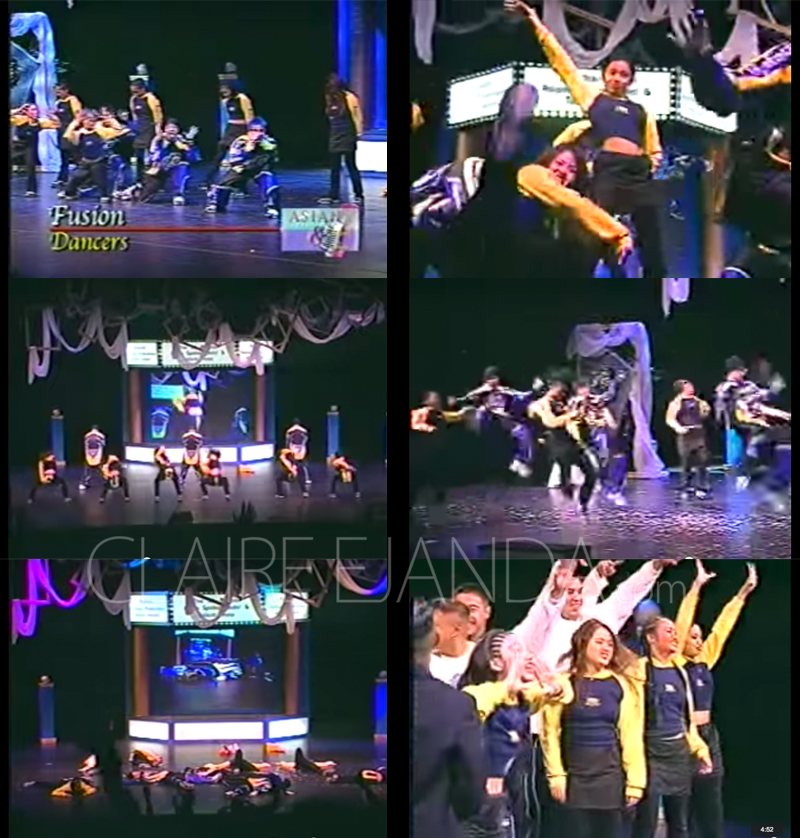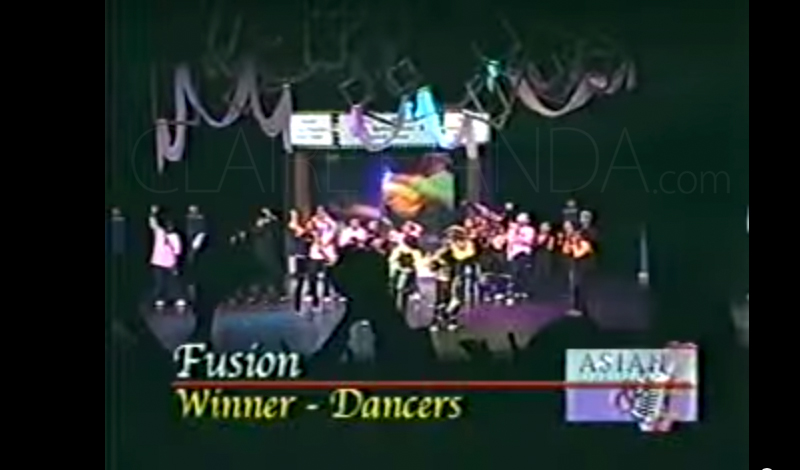Did you know: The style famously associated with MTV’s dance-transformative show, America’s Best Dance Crew, developed from the Filipino-American/Asian-American dance scene? It was crafted in front of live audiences for more than a decade, before it finally made it on a major television network.
Prior to becoming an ABDC-associated style, it had been given a place to live and develop some place else. Before MTV’s America’s Best Dance Crew (ABDC) brought televised hip-hop dance group competitions to the spotlight, 1990 saw an underground surge of a San Francisco Bay Area hip hop dance community that was thriving within a handful of “dance crews”. These Bay Area dance crews were being billed alongside music artists, not as backup to these artists, but as their own form of celebrity. The competitive drive that arose from having to see the same crews at the same shows crafted a style of dance group choreo that needed to be more rule-breaking and unpredictable. Turning to the one-on-one breakdance battles of the 80’s that had never left the 9o’s streets of San Francisco, these “b-boy” antics – from strutters and breakers to pop and lockers – became a crew-deep collaboration, infusing itself with music video hip-hop moves, to create bigger than life visual illusions through organization and synchronization. Thus, this “dirtier” dance group mindset had taken root…
Syncronized “b-boy” inspired dance groups (SBBIDGs) were born.
As the group choreography got more of the “blink and you miss it” treatment – the calling card of all legit break dance battles, the SBBIDGs hunger for live audience reaction grew. Performing in front of a live audience, on stage, was integral in preserving and evolving this particular style of group choreography because it forced the freestyle nature of bboy-ism into a show form that could eventually be accepted by mainstream.
Cities with the heaviest populations of Filipino and Asian communities in the United States were flying-in entertainment acts from their homelands. To bring in the kind of crowd-promise that would validate an overseas act, promotors knew that its American-born youth – many, disconnected in language and culturally distanced from their immigrated parents – needed to be attracted to these “foreign” events somehow. It was dance, then, immune to this disconnect and distance, that naturally found its place. Unlike words, IT DID NOT NEED TO BE DECODED TO BE UNDERSTOOD. This is how dance crews found an absolutely vital “in” that was to eventually provide 1) the audience and 2) the frequency by which the SBBIDG had amassed its’ integrity. Once promoters noticed the wide enthusiasm for the kind of competitiveness that SBBIDGs were hungry to entertain with, the demand for them stuck. Live stage street dance crews then turned itself into a televised opportunity in the early 1990s.
The Filipino and Asian community saw its first US aired televised competition in the form of this talent compeition above. This annually televised San Francisco Bay Area talent competition, above, became Christmas Day tradition among Filipino/Filipino-American and Asian/Asian-American Bay Area households during its nearly decade long run. It was also the first show ever to bring SBBIDGs on television – by way of an anomaly group, Mindtricks (note to readers: remember this group). It was also the first tv show ever to let SBBIDGs compete on air, on a regular basis, until its run ended in 1999.
It was a dream of mine to be on this show.
Two dance crews later, I auditioned. Infusing theatrics with the SBBIDG style, we were selected to compete with Bay Area dance crew legends, MPM and Kaboom Squad (whose members went on to dance for Mindtricks – remember this group?). Furthermore and years later, members of Kaboom Squad were signed on to Season One of ABDC as the infamous Jabbawockeez – whose appearance on that show went on to influence choreography for the entire world.
This was the first time I experienced going for a distant dream and actually attaining it. It was the beginning of investing my life into a creative journey. And it was what I’ve picked up from performing and choreographing dance – more than any other thing I have ever done creatively – that has been the main influencer in how I’ve broken-down-to-build-up every other creative challenge I’ve ever attempted.
>> Fast-forwarding through the remaining details that led to the inception of a show like ABCD: Dancers began to disperse in pursuit of higher education, in part, due to the common sentiment shared by Filipino/Asian parents that, “there is no future in dance.” But not wanting to make the trade-off, they brought the b-boy inspired style with them, invading California, Seattle and Las Vegas college campuses through PCNs (Pilipino Cultural Nights) where college-formed SBBIDGs would perform under the label, “modern dance”. Accelerating SBBIDG development was the highly competitive, yearly culmination of all Filipino-American student organizations known as Friendship Games. There, “modern dance” groups were pitted against each other to see which college came out on top – with the SBBIDG choreography’s infusion with theatrics now evolving hardest in Southern California due to its close proximity to the entertainment capitol of the world. Eventually, this SBBIDG form of performance which had previously been kept breathing within Filipino/Asian-American showcases caught its wind through more ethnically diverse, LA-based, events such as 2000’s Carnival – a performance showcase featuring the works of Hollywood’s elite music industry choreographers. Those in participation and in attendance, then, brought their SBBIDG inspirations from those nights into their Hollywood jobs – creating prime conditions for mainstream attention and momentum. America’s Best Dance Crew debuted on MTV in 2008 and introduced the world to, SBBIDG perfection, the Jabbawockeez.
ABDC, from season one, had an IT-factor, obviously. It was the kind of IT-factor that challenged an entire generation to “break” the structure of group dance choreography with a bboy mentality. So, what I have to say in closing deserves to be said AND by someone who remembers. I remember a time when seeing Mindtricks on the billing meant that we were going to see an entire group close out a show, skilled enough to execute bboy antics as one. I remember a time when no other group to mind could close it out like they did because IT was THEM, synonymized. While televisions everywhere may have started off with the Jabbawockeez, put it in persepctive that they had to be that good because an existing scene had set the kind of standards that forced the Jabbawockeez into an expertise. They are the culmination of years of vision, struggle and risk-taking in a scene that took place on the non-televised, live stages of the Filipino-American/Asian-American dance scene. And that stage – the world of SBBIDG – started off with 1990’s group, Mindtricks. #SBBIDG #predecessors #inventorstatus #Mindtricks
Roles: Dancer, Co-choreographer
MORE? Of the 7 years worth of routines from Lyle, this one in 2005 is my favorite. Rehearsing his choreography to Whitney’s “Million Dollar Bill”:


